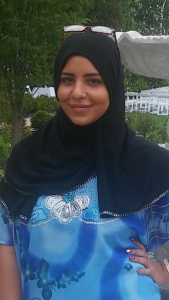The United States has long been regarded as a hub for cultural and ethnic diversity. Some may consider it a ‘melting pot’ while others may opt for a ‘mosaic’ or ‘salad bowl’ in their metaphoric depictions, but the idea remains much the same: different people with different ideas coming together. Is the issue of immigration as simple as these words may describe? In short, the answer is no. Since the early 19th century, the United States has experienced successive waves of immigration from all over the world, with the current post 1960’s wave being the most massive1. As of 2013, the United States had approximately 39.9 million immigrants2, with growing populations from Latin America, Asia, Africa, the Caribbean and the Middle East1. When thinking about people coming into America, it is important to understand what we mean by the term ‘immigrant’. Immigrants are individuals who leave their home country voluntarily because of a want to go somewhere else permanently. This can be for any number of reasons, including a job offer, marriage, enhancement in opportunities, or simply because they believe the benefits of immigrating outweigh the benefits of staying in their home country1. This term is different from others you may have heard such as ‘refugee’ or ‘asylum seeker’ as these designations describe people who migrate from their home countries involuntarily, not because they want to but because they feel as if they have to. Questions about the actual experience of immigration, and what happens to immigrants once they arrive in a new country are innumerable, as these experiences are extremely multifaceted1. One avenue that can be explored in terms of immigrant experience, is its impacts on human development.
As human beings, we are growing and changing from the moment we are conceived, to the moment we die. This is development. How we develop is a result of our individual personalities and our interactions with the world around us3. For immigrants, this process intertwined with issues surrounding race/ethnicity, cultural background, age, language, and time of immigration1. All of these things affect the ability of an immigrant to interact with United States society. Although there are certainly developmental experiences that are consistent across all immigrant populations such as the need to find balance between home culture and new culture, placing all immigrants into one descriptive box is not helpful2. For example, the experience of a white immigrant from Canada who speaks English is going to be drastically different from a person of color from Iran who speaks little English4. Similarly, the experience of a two-year-old immigrating from China, is likely going to be much different than their parent once in the United States2.
One of the most important contributing factors to the experience of an immigrant in their new country is the current rhetoric surrounding their specific immigrant population. Although the United States has always had a preference for whiteness1, an attitude that is openly endorsed in today’s presidential administration, the ideas surrounding specific immigrant groups are subject to change. For example, the events of 9/11, lead to a phenomenal increase in the presence of islamophobia, an effect that still lives on today. Fast-forward to 2018 and examine the more current negative rhetoric surrounding Mexican immigrants as is similarly promoted by the Trump administration. The dominant cultural ideas at the time of immigration play a phenomenal role in the experience of the immigrant2.
The interaction between immigrant and their environment in each of the situations described above serve to tremendously impact development3. Specifically, prolonged interactions such as those between parent and child, and peers in a school setting play a crucial role in the development of both immigrant attitudes about themselves, as well as attitudes about immigrants amongst native born citizens3,5. So what does all of this mean for immigrants? How can those living in United States society make their experience better? Researchers are consistently attempting to construct new models to describe the strategies that immigrants develop as they integrate into U.S society3. The most important thing we can do as active citizens is talk to each other. Parents play a key role in the construction of their children’s attitudes surrounding immigrants, specifically in early adolescence, but once this period passes, peer influence plays the larger role5. By encouraging children to think positively of immigrants and encouraging the formation of friendships between native born Americans and their immigrant counterparts, in most cases, prejudice against immigrant groups will decrease6. Through further research and conversation, the United States can become a more inclusive environment for all of its citizens.
References
- Schwartz, S. J., Unger, J. B., Zamboanga, B. L., & Szapocznik, J. (2010). Rethinking the concept of acculturation: Implications for theory and research. American Psychologist, 65(4), 237–251. https://doi.org/10.1037/a0019330
- APA Presidential Taskforce on Immigration (2013). Crossroads: The psychology of immigration in the new century. Journal of Latina/O Psychology, 1(3), 133–148. https://doi.org/10.1037/lat0000001
- Bronfenbrenner, U. (2000). Ecological systems theory. In A. E. Kazdin & A. E. Kazdin (Ed) (Eds.), Encyclopedia of Psychology, Vol. 3. (pp. 129–133). Washington, DC, US; New York, NY, US: American Psychological Association.
- García Coll, C., Lamberty, G., Jenkins, R., McAdoo, H. P., Crnic, K., Wasik, B. H., & Garcia, H. V. (1996). An integrative model for the study of developmental competencies in minority children. Child Development, 67(5), 1891–1914. https://doi.org/10.2307/1131600
- Gniewosz, B., & Noack, P. (2015). Parental influences on adolescents’ negative attitudes toward immigrants. Journal of Youth and Adolescence, 44(9), 1787-1802. https://doi.org/10.1007/s10964-05-0291-3
- Zalk, M. H. W., & Kerr, M. (2014). Developmental trajectories of prejudice and tolerance toward immigrants from early to late adolescence. Journal of Youth and Adolescence, 43(10), 1658–1671. https://doi.org/10.1007/s10964-014-0164-1








Recent Comments